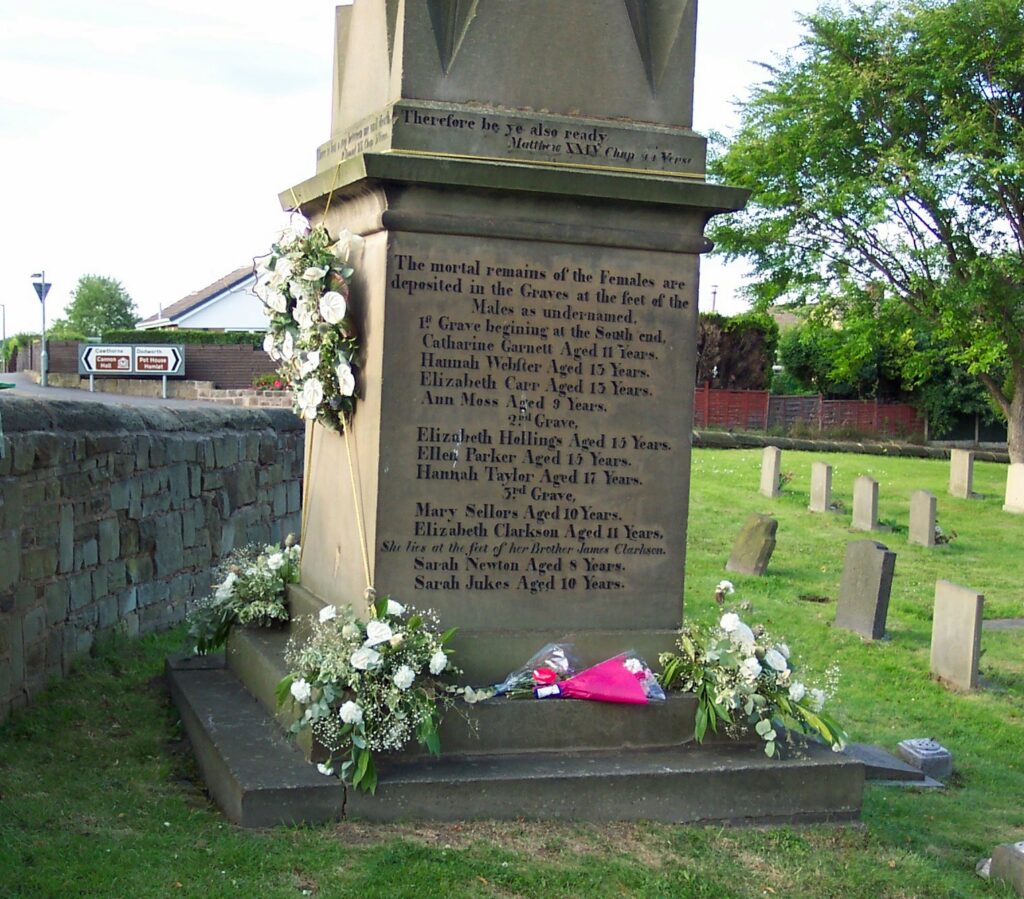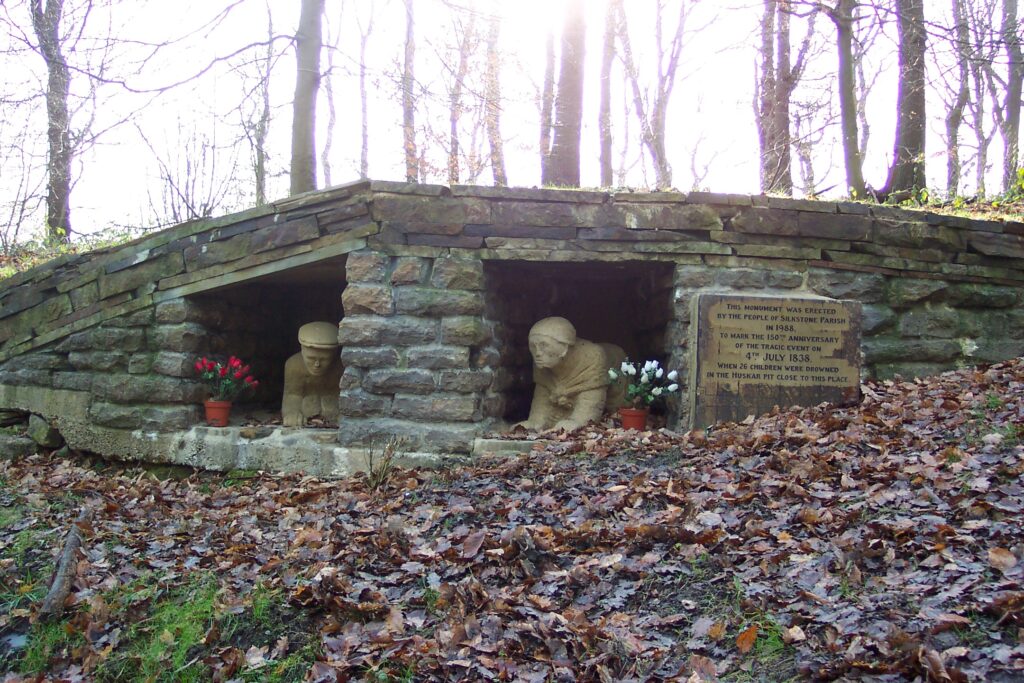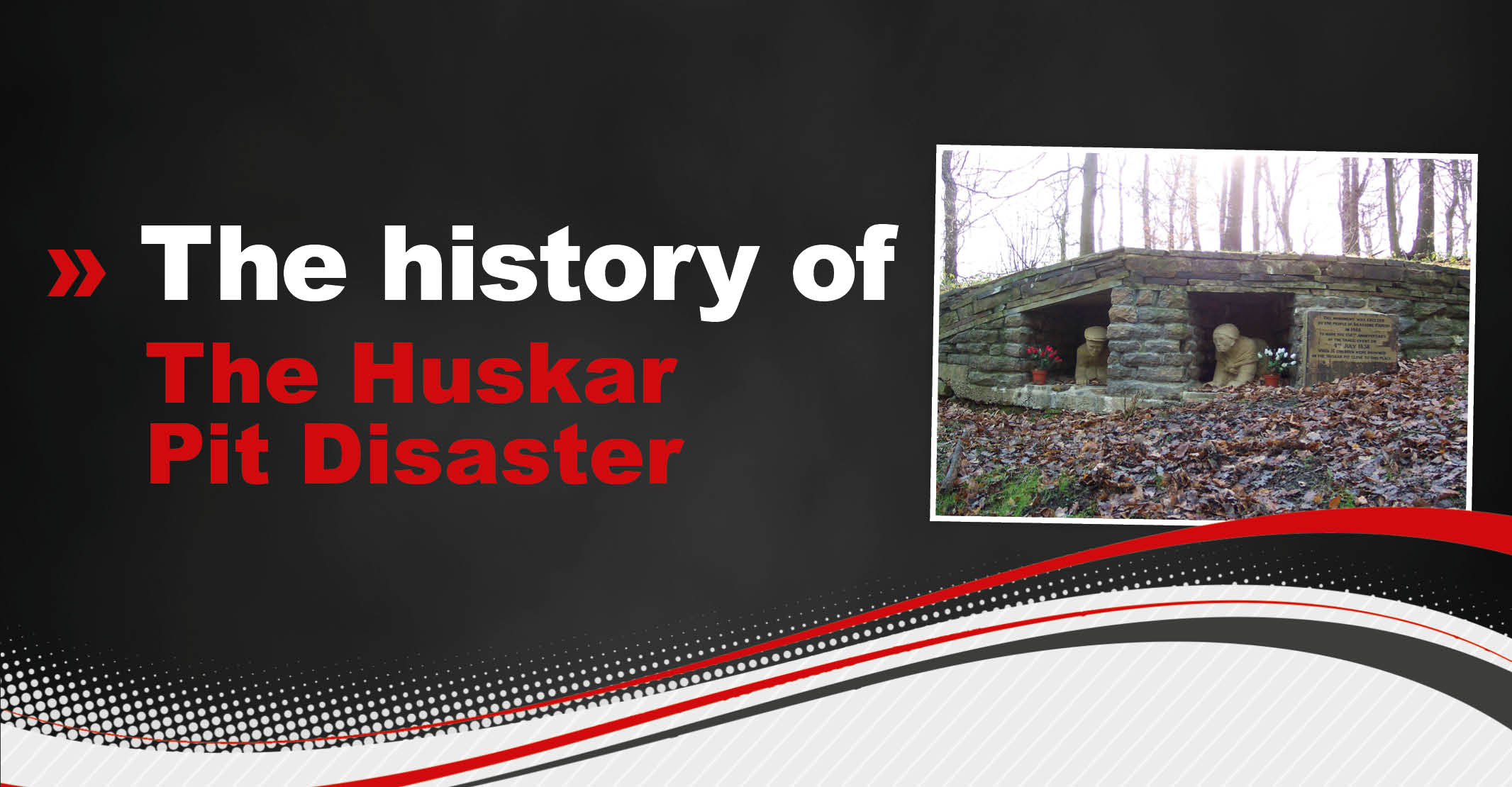Written by Jane Raistrick
Heritage Silkstone
For more information, visit www.heritagesilkstone.co.uk
The 4th of July 1838 saw what must rank as one of the country’s worst mining disasters involving children. On that hot summer’s day 26 children between the ages of 7 to 17 drowned in the Huskar mine near to Silkstone.
The mine was owned by Robert Couldwell Clarke, the head of a very wealthy family who dominated the mining industry in the area. Nearly 70 men were employed as miners supported by 100 children, who worked between Moorend and the adjoining Huskar mines.
The Clarke family employed the youngest children as trappers, who would open and shut the ventilation doors, to let the coal carts pass through the mine workings. Older children would work as hurriers, pushing the heavy coal carts to get them to the surface. The children would work a 10-to-12-hour day for which a young trapper was paid 6d (2.5p) per day which equates to about £2 at today’s value.
The 4th of July was a warm, humid summer’s day. Over 300 feet below ground 33 getters and 50 hurriers and trappers were cutting and moving coal. The weather started to deteriorate at midday and by 2pm, a terrible thunderstorm raged across Silkstone and surrounding villages, causing destruction to land and property. Rivers and streams started to flood.
The 2 engine tenders became concerned at the amount of rainwater and ice flooding down the shaft. The banksman in charge shouted down the shaft to the steward, William Lamb, to prepare the miners for evacuation. The engine and boiler yard at the Husker pit flooded, extinguishing the fire in the furnace of the steam-raising boiler.
Underground steward William Lamb began to prepare for evacuation, extinguishing all lights and gathering the miners at the shaft bottom, where they would be lifted to the surface manually, which was a slow process. The children made the fateful decision to make their own way out via the day hole or drift, which came out to the surface at Nabs Wood. William Lamb told the children to stay with everyone else, but 40 children defied him, one being his own 8-year-old son, George. The children, having gone through this door and starting to climb up the incline, were met with the torrent of water which swept them down to the door behind them, where they were trapped and 26 of them drowned, George Lamb was one of the 26 children.

An inquest was held at the Red Lion pub, and it was determined that the children’s deaths had been accidental. The funerals were held on 7th July and were attended by thousands.
In 1842 the Mines Act was passed prohibiting women and children under ten from working underground and in 1853 Sarah Ann Clarke, widow of mine owner R C Clarke, had endowed Silkstone Infants School. Some managed to escape the unhealthy conditions found in the coal mines and became bookkeepers and teachers. The girls found work as dress makers, milliners, housekeepers, and shop workers.
The villagers of Silkstone and surrounding villages have kept alive the memory of those children, who tragically lost their lives that day. There is a monument to the 26 children at the top of Silkstone churchyard, built and paid for by the Clarke family.
There is also a monument in Nabs Wood close to the entrance to the day hole put up by Silkstone Parish Council, to mark the 150th anniversary of the disaster in 1988.
In 2010 a stained-glass window, designed by a Silkstone resident and made by volunteers as a memorial to the children, was installed in Silkstone church. Heritage Silkstone, based in the church, have extensively research the Huskar disaster and all the families who lost children on that fateful summer’s day.



